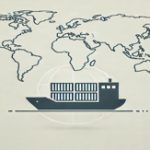In today’s fast-paced global market, sourcing high-demand products can be a goldmine for importers. Yet, importing niche goods is not a straightforward endeavor. It requires a balance of creativity, strategic planning, and a solid understanding of market needs. Whether you’re an experienced importer or a budding entrepreneur, this guide will walk you through the key steps to successfully source and import niche goods.
1. Understanding the Value of Niche Goods
What exactly are niche goods, and why should you care? Niche goods cater to specific, often underserved, market segments. Think of gluten-free snacks for health-conscious consumers or handwoven textiles for eco-conscious buyers. These products tend to command higher prices and enjoy strong customer loyalty.
Why they’re worth the effort
Unlike mass-market items, niche goods often face less competition, giving you a unique edge. Plus, they allow you to tap into smaller but fiercely loyal customer bases. However, sourcing these products requires more finesse than picking generic items off a catalog.
2. Researching Market Trends
Start with data, not guesses. Importing blindly is like throwing darts in the dark. Begin by analyzing market trends to identify what’s in demand. Utilize tools like Google Trends, Amazon Best Sellers, and industry reports to find potential niche products.
Pro tip: Attend trade shows and exhibitions to discover unique products that haven’t flooded your local market yet. You might stumble upon something as rare as organic dragon fruit powder or artisanal soy candles!
Transitioning from research to action: Once you’ve identified a product, validate its demand. Surveys, focus groups, or even simple polls on social media can help you gauge interest. This step ensures you’re not investing in a product no one wants.
3. Finding Reliable Suppliers
This step separates amateurs from pros. Your supplier is your backbone, and picking the wrong one can sink your business faster than you can say “customs delay.”
Where to start:
- Online B2B platforms: Websites like Alibaba, Global Sources, and Made-in-China are treasure troves of suppliers.
- Trade fairs: Nothing beats face-to-face meetings. Events like the Canton Fair can introduce you to high-quality suppliers.
- Local sourcing agents: If navigating a foreign market feels overwhelming, consider hiring an agent to vet suppliers for you.
Red flags to avoid: Beware of suppliers with inconsistent communication, lack of certifications, or reviews that sound too good to be true. After all, if a deal sounds like a bargain basement price, there’s probably a catch.
4. Navigating Quality Control
Here’s a hard truth: not all suppliers prioritize quality as you do. Before you commit to large orders, insist on quality checks.
Best practices:
- Request samples: Always ask for product samples. They might cost extra, but they’re worth the investment.
- Inspect thoroughly: Look for certifications like ISO or Fair Trade, depending on your niche. If you’re sourcing food, ensure it complies with safety standards in your target market.
- Consider third-party inspections: Firms like SGS or Bureau Veritas can conduct inspections to ensure your goods meet the promised standards.
5. Mastering the Art of Negotiation
Negotiation is where you turn decent deals into fantastic ones. Suppliers often expect you to haggle, so don’t shy away from negotiating prices, minimum order quantities, and shipping terms.
Tips for successful negotiations:
- Be polite but firm.
- Highlight your long-term plans to become a repeat customer.
- Compare quotes from multiple suppliers to have a leverage point.
Remember: Negotiation isn’t about squeezing every penny. It’s about building a partnership that benefits both parties.
6. Tackling Logistics
Importing niche goods isn’t just about finding the right product—it’s about getting it to your doorstep without a hitch. Logistics can make or break your importing game.
Steps to simplify logistics:
- Choose between air freight for speed or sea freight for cost savings.
- Understand your country’s import regulations. Products like food or electronics often have stricter guidelines.
- Work with a reliable freight forwarder to handle shipping, customs clearance, and last-mile delivery.
Humor break: If navigating customs regulations feels like deciphering ancient hieroglyphs, don’t worry—you’re not alone. Even seasoned importers feel the pinch sometimes.
7. Understanding Costs and Margins
Let’s face it—profitability is the ultimate goal. To make importing worthwhile, you need to get your numbers right.
Breakdown of key costs:
- Product cost: Includes price per unit and any customization fees.
- Shipping and handling: Consider packaging, freight, and insurance costs.
- Duties and taxes: Research tariffs in your destination country to avoid surprises.
Once you’ve tallied up all costs, determine your selling price. Aim for a healthy profit margin while staying competitive in the market.
8. Marketing Your Niche Goods
Congratulations! Your goods are on their way. But the work doesn’t stop there. To succeed, you must market these products effectively.
Strategies for success:
- Create compelling product descriptions: Highlight what makes your niche product unique.
- Leverage social media: Platforms like Instagram and TikTok are goldmines for reaching niche audiences.
- Collaborate with influencers: A single endorsement can catapult your product into the limelight.
9. Preparing for Challenges
Every importer faces hurdles, especially with niche goods. Delays, quality issues, and fluctuating demand are par for the course. However, with preparation and adaptability, you can overcome these obstacles.
Common challenges and solutions:
- Customs delays: Mitigate by hiring a customs broker and ensuring all paperwork is accurate.
- Demand fluctuations: Diversify your product range to reduce reliance on a single item.
- Supplier issues: Build relationships with multiple suppliers to avoid over-dependence.
Conclusion
Importing niche goods is as rewarding as it is challenging. From market research to logistics, every step requires attention to detail and a proactive mindset. But with proper planning, persistence, and a touch of humor to weather the inevitable hiccups, you can build a thriving business.
Ready to start? Take that first step today, and who knows—you might just find yourself dominating a niche market tomorrow.
You can contact us on WhatsApp to discuss this topic further.




